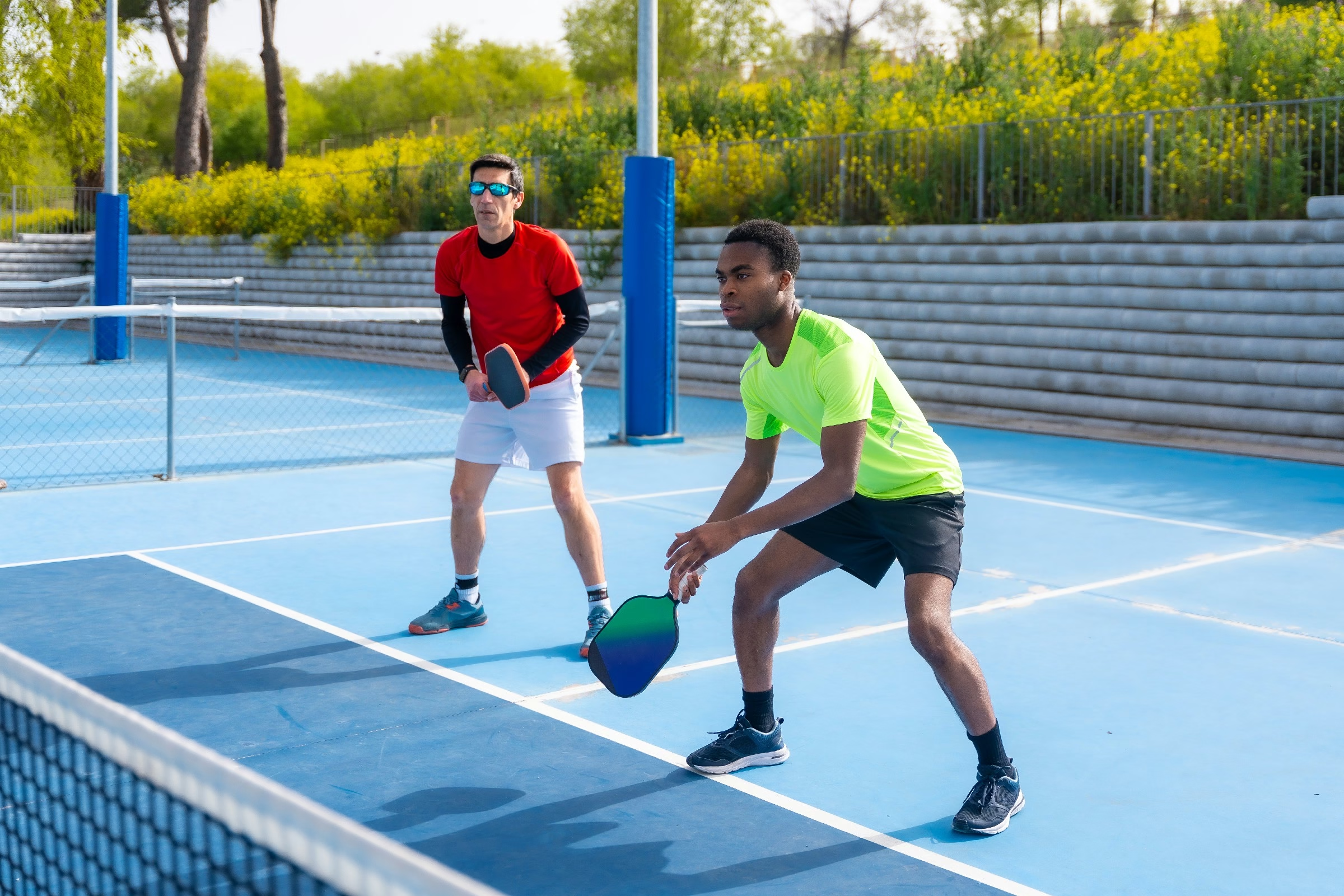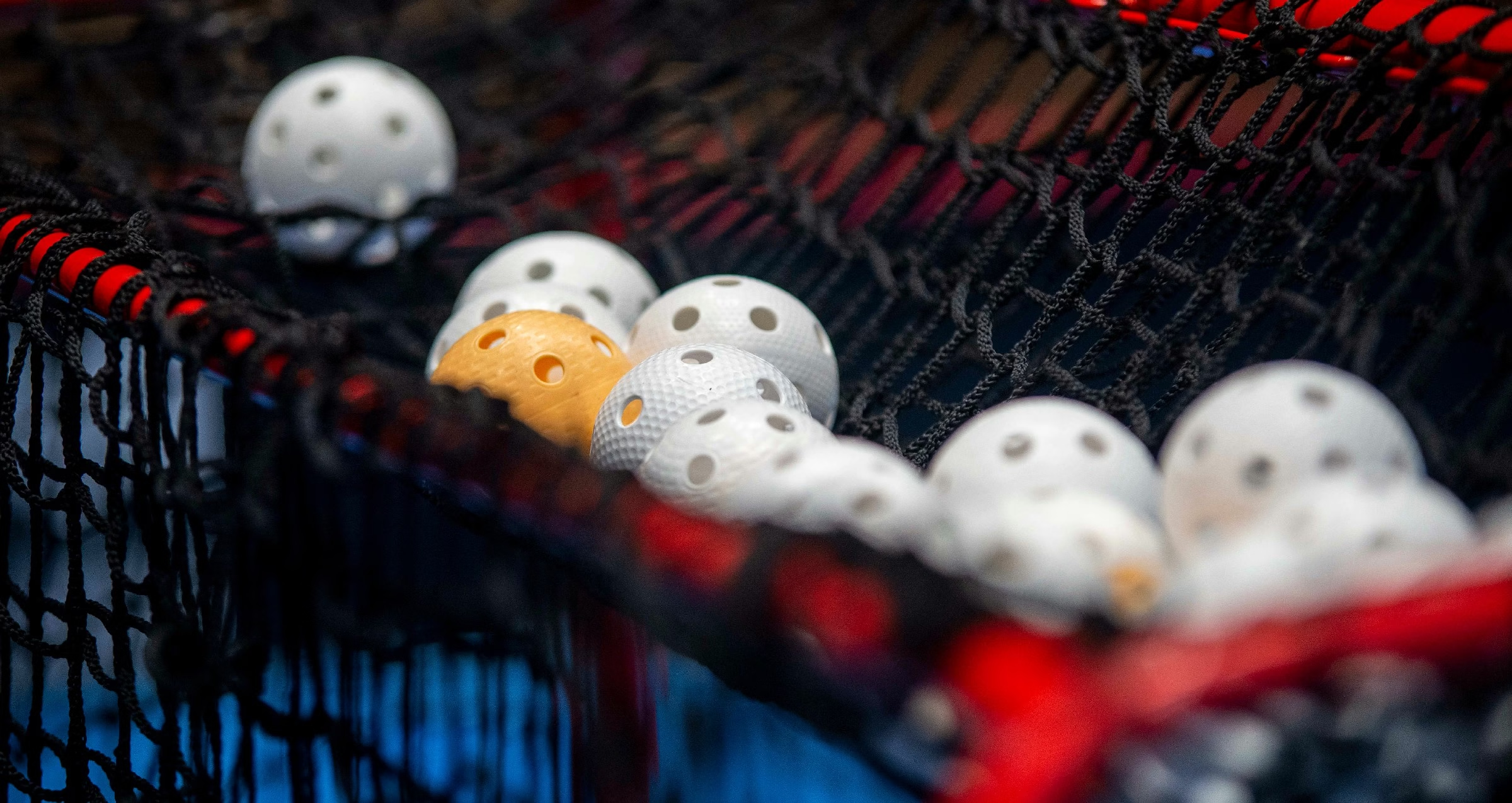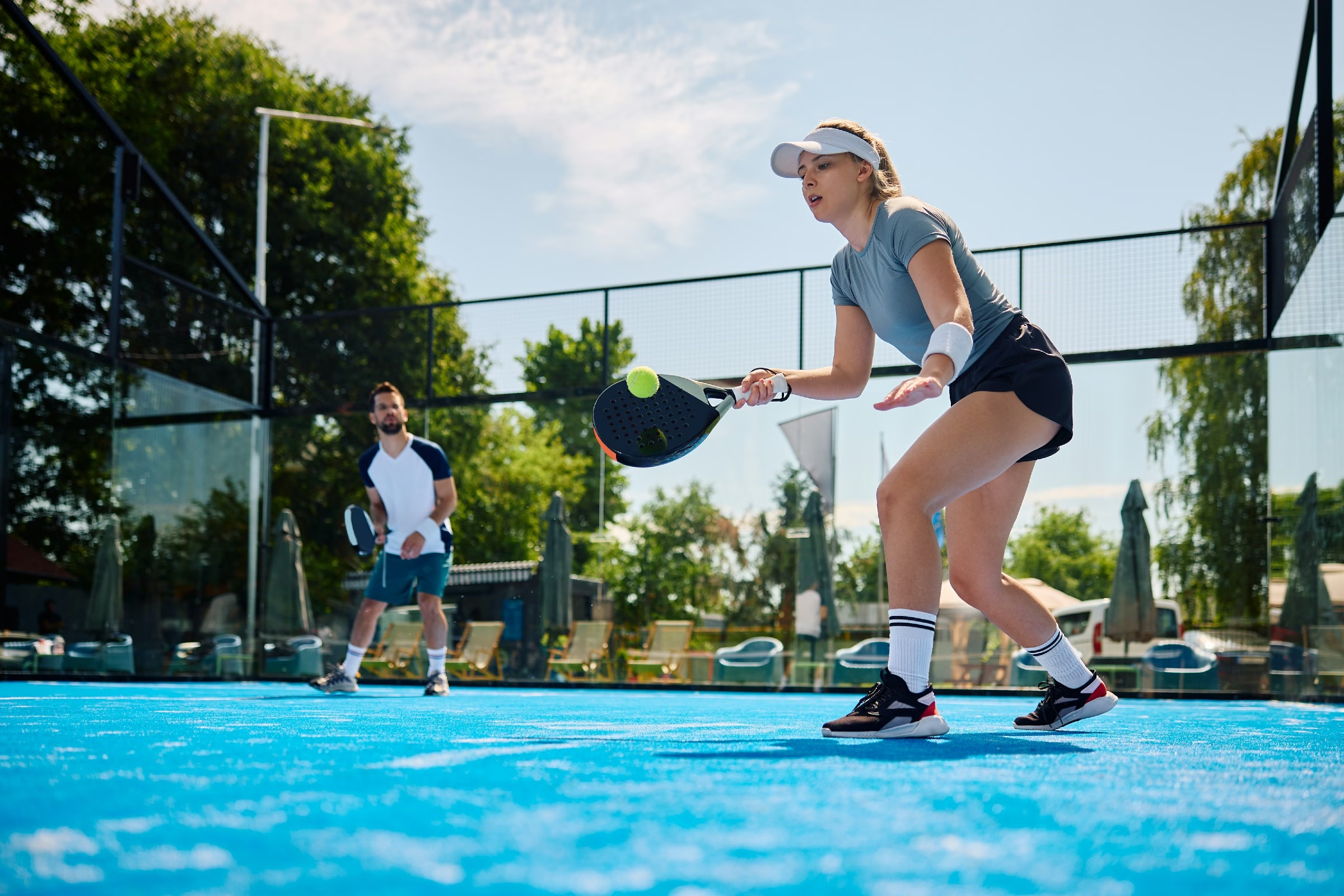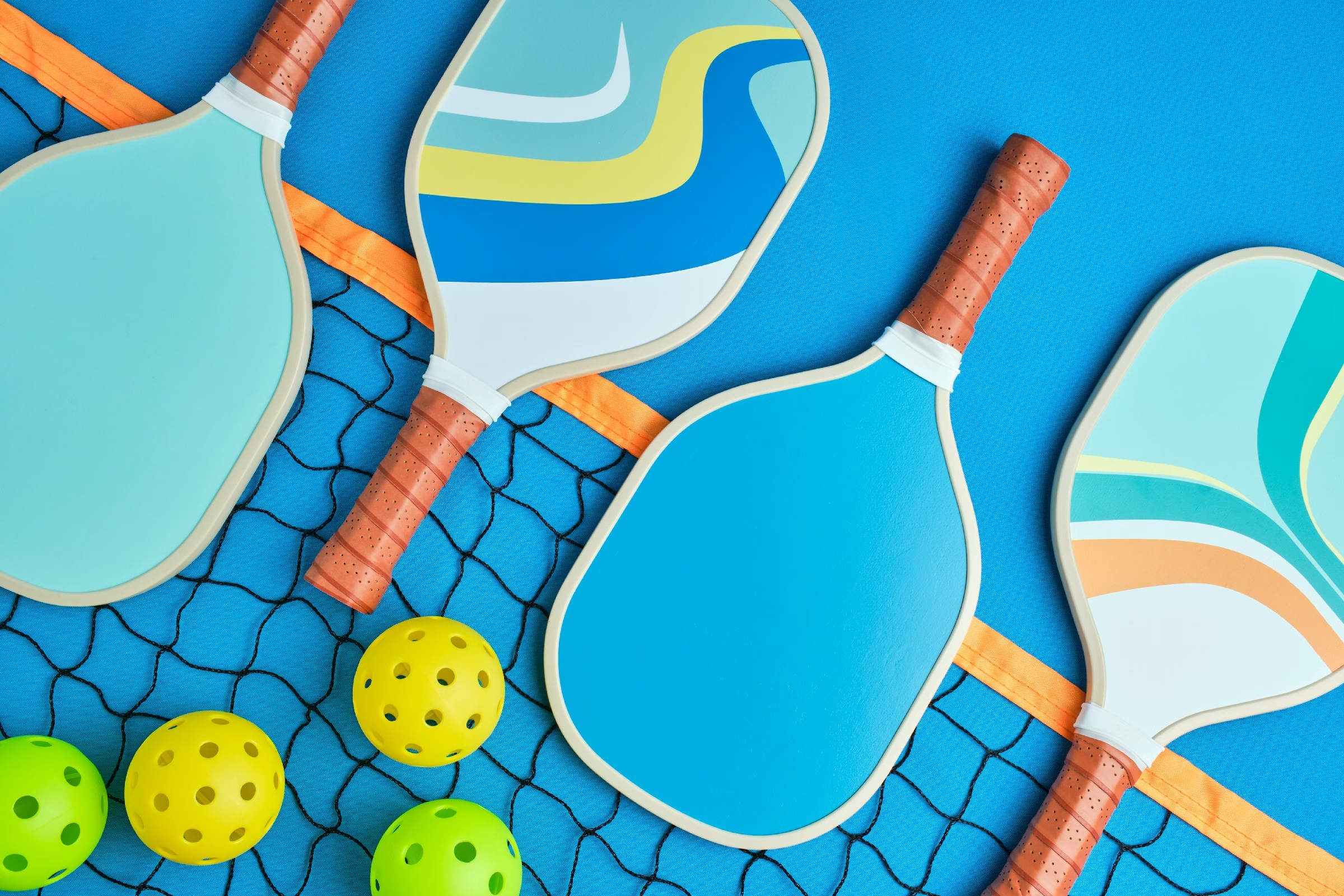Blog
who invented pickleball and what year was it invented

In the summer of 1965, on the sun-soaked shores of Bainbridge Island, Washington, a playful experiment unfolded that would unknowingly pave the way for a new sport to capture the hearts of millions. Enter pickleball,a game that combines elements of tennis,badminton,and ping-pong into a delightful pursuit that is as engaging as it is accessible. But who was the mastermind behind this whimsical creation, and what inspired its inception? In this article, we will journey back in time to uncover the origins of pickleball, exploring the visionaries who crafted its rules and shaped its early days. Join us as we unravel the story of how this beloved game came to be and the year it first made its playful debut.
Table of Contents
- The Origins of pickleball and Its Inventor
- Key Innovations That Shaped the Game
- The Year Pickleball Came to Life
- Understanding the Influence of Geography on the games Development
- A Legacy of Fun: The Rise of Pickleball Through the Years
- Recommendations for New Players to Join the Pickleball Revolution
- Q&A
- Final thoughts
The Origins of Pickleball and Its Inventor
Pickleball, a sport that has rapidly gained popularity, has its origins rooted in the summer of 1965 on bainbridge Island in washington State. It was created by Joel pritchard, a congressman, along with his friend Bill Bell and Bell’s wife, Britton, as a way to entertain their families. After returning from a game of golf, the trio sought to engage their children in a fun outdoor activity. They improvised by setting up a makeshift court, using a badminton net, a paddle, and a perforated plastic ball.The gameplay soon blossomed into a competitive but amiable sport that incorporated elements from tennis, badminton, and ping-pong.
As the game developed, the original rules were crafted, primarily based on the existing sports they drew inspiration from. Initial games featured single and double formats, though the emphasis was on cooperation and recreation rather than competition. The dynamic nature of pickleball offered a unique blend of strategy and physicality,appealing to players of various ages and skill levels. This laid the groundwork for what would become a beloved pastime among families and communities alike.
| key Figures | Contribution |
|---|---|
| Joel Pritchard | One of the co-inventors who initiated the game. |
| Bill Bell | Helped to create and promote the sport. |
| Britton Bell | Contributed to the establishment of rules and gameplay. |
As pickleball continued to grow in popularity throughout the 1970s,it captured the attention of a wider audience beyond just families on Bainbridge Island. In 1972, the Pickleball Association was formed, helping to standardize rules and regulations for the sport. This led to the first official tournament being held in 1976.Today, pickleball is played internationally and has evolved into various formats and styles, making it a versatile and inclusive sport that appeals to players from all walks of life.
Key Innovations That Shaped the Game
The inception of pickleball in 1965 by three fathers—Joel Pritchard, Bill Bell, and Barney McCallum—marked a pivotal moment in the sports world, birthing a game that would grow exponentially in popularity. The original goal was to create a fun, engaging activity for their children during the summer.What started as a simple backyard game quickly transformed into a competitive sport, leading to significant innovations that helped define its play style and appeal.
One of the most notable innovations was the introduction of the perforated plastic ball. This lightweight ball, designed to handle the unique demands of the game, allowed for enhanced control and precision in shots. Additionally, the paddle, made of lightweight composite materials, distinguished itself from customary racquets used in tennis or badminton, making it easier for all ages to participate without needing extensive training. Such equipment improvements paved the way for both recreational and professional play.
The establishment of official rules in 1984 and the formation of the USA Pickleball Association (USAPA) further solidified the sport’s framework. These advancements ensured consistency in gameplay while promoting the sport at local tournaments and clubs, fostering a community around pickleball. Over time, the innovations made in equipment, rules, and community engagement have considerably contributed to pickleball’s meteoric rise, ensuring its place as a staple in American sporting culture.
The Year Pickleball Came to life
In the summer of 1965, a trio of friends—Joel Pritchard, Bill Bell, and Barney McCallum—found themselves seeking a new way to entertain their families during a visit to Pritchard’s home on Bainbridge Island, Washington. What began as a simple game utilizing an old badminton court quickly evolved into something remarkable. By combining elements from various sports like tennis, badminton, and table tennis, they devised a game that not only emphasized fun but also fostered friendly competition. This innovative spirit marked the humble beginnings of a sport that would soon captivate audiences across the globe.
The original rules were drawn from existing games, yet several unique aspects were added. Among the key features was the introduction of a perforated plastic ball, which allowed players to engage in lengthy rallies and strategic shots. As these pioneers played, they experimented with court dimensions and equipment, culminating in a set of informal yet effective guidelines that would lay the foundation for the pickleball we know today. Through their collective imagination and enthusiasm, a new pastime was born that encouraged social interaction and fitness.
| Year | Milestone |
|---|---|
| 1965 | Creation of the game by Pritchard,Bell,and McCallum |
| 1967 | First official rules documented |
| 1972 | First pickleball tournament held |
| 1984 | Pickleball Association founded |
Understanding the Influence of Geography on the Games Development
The geography of a region plays a significant role in shaping the popularity and evolution of various games,including the relatively recent invention of pickleball. Originating in the Pacific Northwest of the United States in the mid-1960s, pickleball was born from the unique recreational needs of its surroundings. The vast outdoor spaces provided a perfect backdrop for a sport that combines elements of tennis, badminton, and table tennis, catering to players of all ages. This geographic layout not only facilitated play but also encouraged community engagement, leading to its rapid spread.
In areas with abundant parks and retirement communities,the demand for accessible yet engaging physical activity contributed to the game’s rise. The demographics of such regions further influenced the design and popularity of pickleball. A mix of young families looking for fun activities and older adults seeking low-impact exercise created a diverse player base. Consequently, local facilities adapted to meet these players’ needs, ensuring ample court availability and organized tournaments, further embedding pickleball into the cultural fabric of the area.
The success of pickleball in this geographic habitat demonstrates how local characteristics can inspire innovative games. For example, the coastal weather of the Pacific Northwest allows for outdoor play most of the year.This not only enhances gameplay opportunities but also influences the materials and equipment used, as manufacturers respond to the climate and terrain. As the sport continues to gain traction across the country and internationally, the lessons learned from its geographic origins may pave the way for new adaptations, venues, and ultimately, future innovations.
A Legacy of Fun: The Rise of Pickleball Through the Years
Pickleball, a sport that has transcended generations, was born in the summer of 1965. The innovation is credited to three friends—Joel Pritchard, Bill Bell, and Barney McCallum—who sought to create a game that could be enjoyed by the entire family. They improvised with a badminton court, a perforated plastic ball, and paddles made from materials they had on hand. This laid the foundation for what would become a beloved game, blending elements of tennis, badminton, and ping-pong into a unique, accessible sport.
Initially, the rules were simple and straightforward, allowing players to jump in without needing extensive knowledge of complex sports regulations. Pickleball rapidly gained traction in local communities, and its popularity quickly spread beyond Washington State. Factors contributing to its rise include:
- Easy to Learn: With straightforward rules, players of all ages can engage without lengthy training.
- Community Building: pickleball fosters camaraderie, making it a choice activity for families and social gatherings.
- Health Benefits: It offers a fun way to get exercise, promoting cardiovascular health while enhancing coordination and agility.
This newfound popularity paved the way for the establishment of various associations and leagues, which helped formalize the sport. As the decade progressed, structured tournaments emerged, and players began to take the sport more seriously. The formation of the USA Pickleball Association in 2005 marked a significant milestone, consolidating rules and providing a framework for competitive play. Today, the sport is played globally, boasting millions of enthusiasts, and continues to adapt while honoring its fun and family-centric origins.
Recommendations for New Players to join the Pickleball Revolution
Embarking on your pickleball journey can be both exciting and overwhelming due to the sport’s growing popularity. To enhance your experience, it’s essential to start with the right mindset and tools.Here are some key recommendations:
- Invest in Quality Equipment: Select a paddle that suits your style, whether you prefer lightweight options for quick maneuvers or heavier ones for power plays. don’t forget to choose pickleballs that match the playing conditions—indoor balls differ from outdoor ones.
- Learn the Rules: Familiarize yourself with the basic rules of pickleball, including the kitchen rule and scoring. Understanding the game’s structure will elevate your confidence and effectiveness on the court.
- Join Local Communities: Connect with local pickleball clubs or online groups. Engaging with seasoned players can provide valuable insights, tips, and perhaps even form partnerships for practice and friendly matches.
Another important aspect of joining the pickleball revolution is to develop essential skills through practice. Focus on enhancing your serve, volley, and footwork to have a well-rounded game. Participating in a few beginner clinics can provide structured environments to hone your abilities while meeting fellow enthusiasts.
Keeping a positive attitude is crucial in the learning process. Embrace the learning curve and celebrate small victories along the way. Remember that everyone was a beginner once, and the pickleball community is generally inclusive and welcoming.With determination and a love for the game, you’ll quickly find your stride and contribute to the dynamic energy of this revolutionary sport.
Q&A
Q: Who invented pickleball?
A: pickleball was invented by three friends: Joel Pritchard, Bill Bell, and Barney McCallum. On a summer day in 1965,in Bainbridge Island,Washington,they sought to create a new game that the whole family could enjoy.
Q: What inspired them to create pickleball?
A: The trio initially wanted to set up a badminton game for their families but found that the shuttlecock was missing. Resourceful and undeterred, they improvised using a whiffle ball and adapted elements from badminton, tennis, and table tennis to invent a sport that would be both fun and accessible.
Q: In what year was pickleball invented?
A: Pickleball was invented in 1965,marking the begining of a game that would grow in popularity over the decades,transforming from a backyard pastime to a beloved sport enjoyed by millions.
Q: How did the name “pickleball” come about?
A: The name “pickleball” is often credited to the family dog of one of the inventors, who was named Pickles. The dog would chase after the ball during their games. However, some believe the name derives from the term “pickle boat,” referring to a crew in rowing where leftover oarsmen are chosen. Irrespective of its origin, the name has certainly stuck!
Q: What are the key elements that make pickleball unique?
A: Pickleball combines elements of several sports, incorporating a smaller court similar to badminton, a paddle like tennis, and a perforated plastic ball akin to a whiffle ball. The game emphasizes fun, strategy, and social interaction, making it appealing across various age groups and skill levels.
Q: Is pickleball gaining popularity, and if so, why?
A: Yes, pickleball has seen tremendous growth in popularity over the years, particularly in the United States.Its appeal lies in its ease of play, the relatively small physical space required, and the inclusive nature of the game, allowing players of all ages and abilities to participate. This has fostered community engagement and fitness among players.
Q: Where can someone learn more about the game and how to play?
A: Aspiring players can learn more about pickleball through numerous resources available online, including official pickleball websites, instructional videos, and local community centers that offer classes and open play sessions. Joining a pickleball club or group can also be a great way to dive into the sport and meet fellow enthusiasts!
Final Thoughts
As our journey through the origins of pickleball comes to a close, we find ourselves standing on the vibrant court where innovation meets recreation. It was in 1965 that Joel Pritchard, Bill Bell, and Barney McCallum united their visions and resourcefulness to craft this engaging sport, forever changing the landscape of leisure activities. With its playful combination of elements from tennis, badminton, and ping-pong, pickleball has become a staple in backyards and community centers alike.
Today,as players of all ages rally to the sound of the plastic ball bouncing against wooden paddles,we honor the collaborative spirit that birthed this game. The legacy of pickleball continues to grow, drawing players into its inclusive embrace. So whether you’re a seasoned pro or a curious beginner,step onto the court and experience the joy of pickleball for yourself—after all,it’s not just a game; it’s a celebration of community and creativity powered by the shared love of play.












